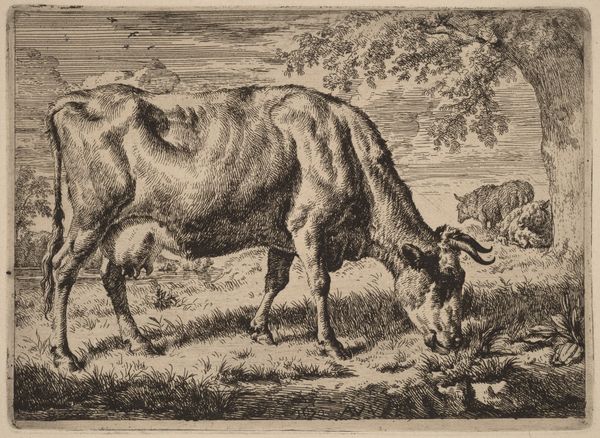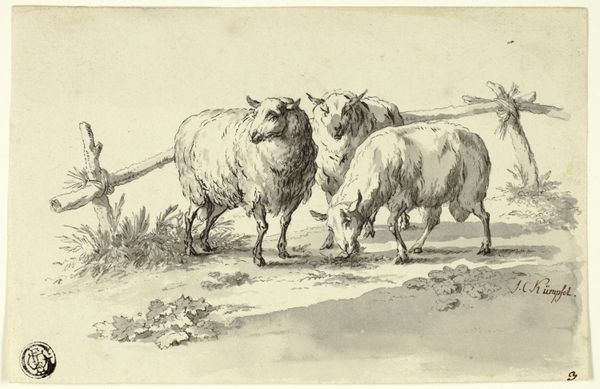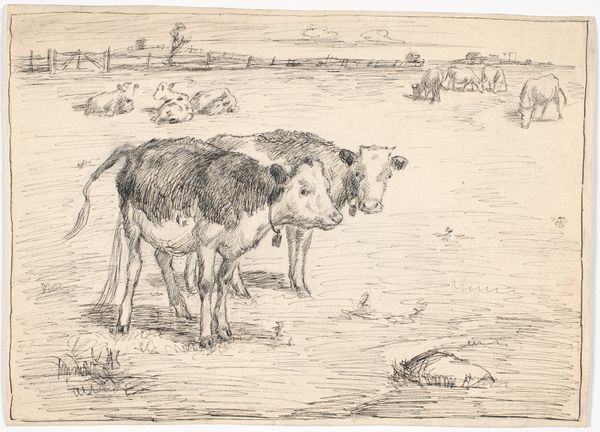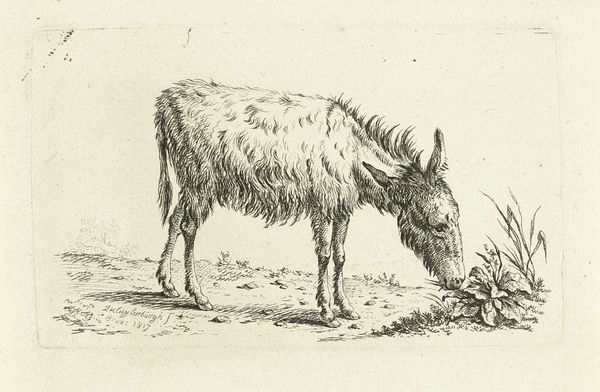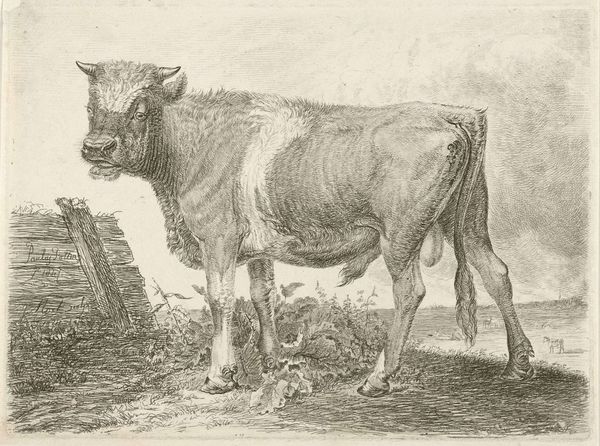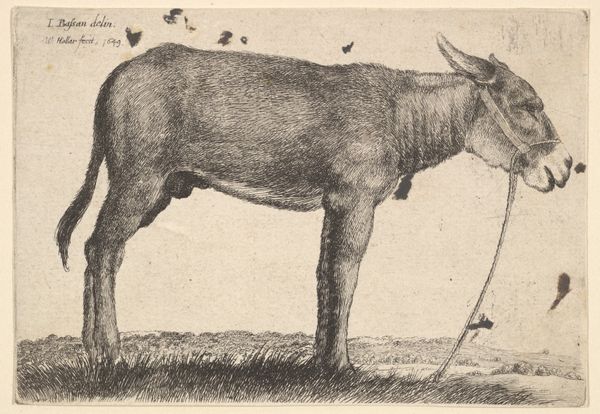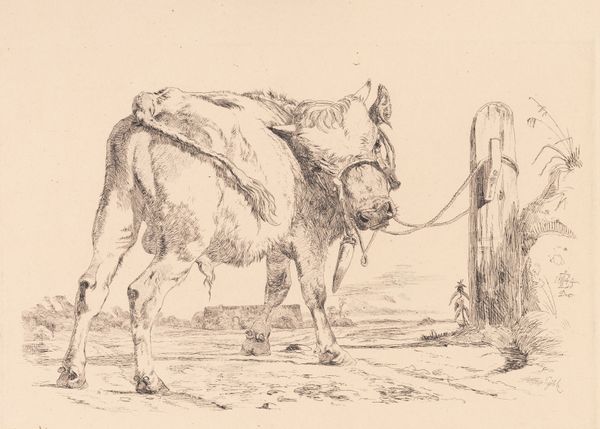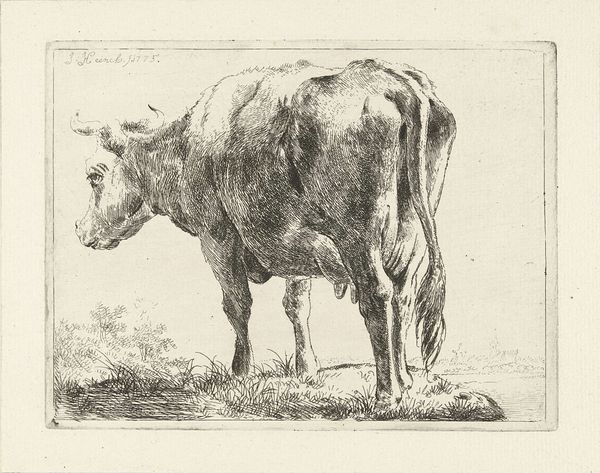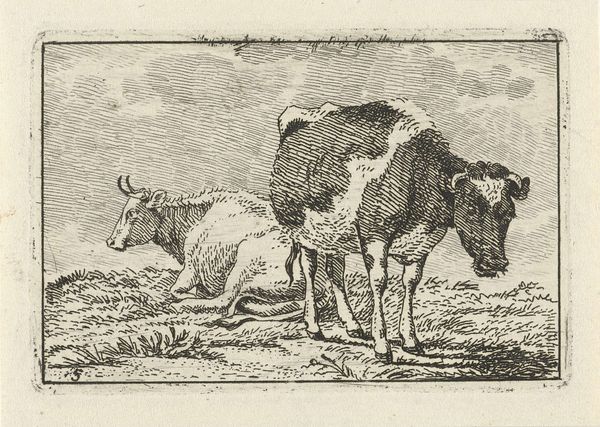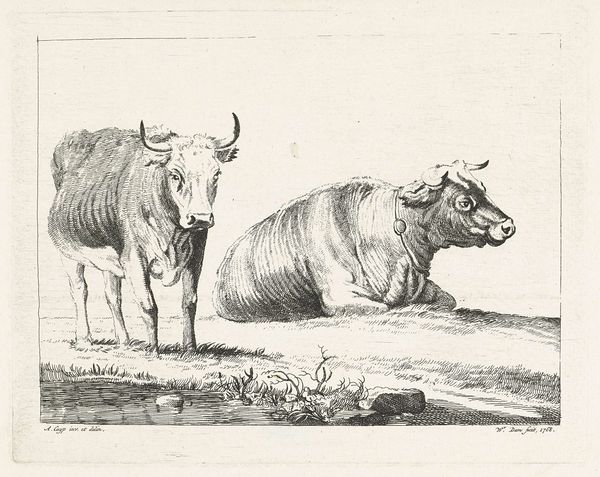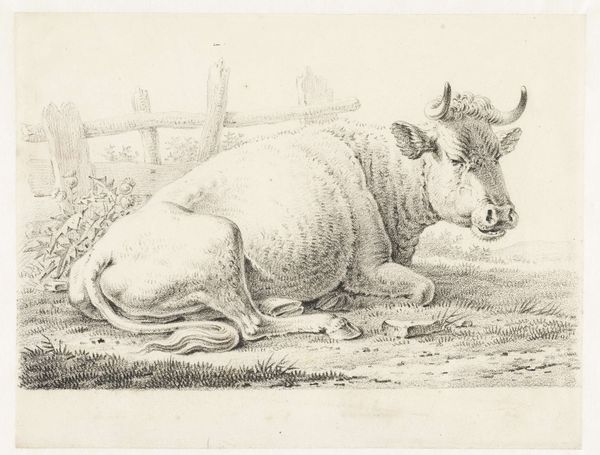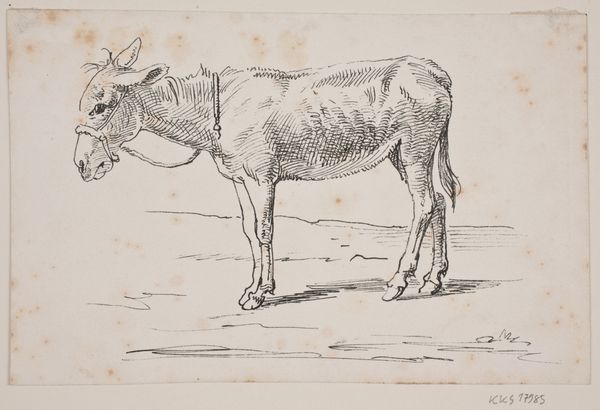
drawing, print, ink, pen
#
drawing
# print
#
pen sketch
#
pencil sketch
#
landscape
#
ink
#
romanticism
#
pen
#
genre-painting
#
realism
Dimensions: 112 mm (height) x 163 mm (width) (bladmaal)
Editor: We're looking at "Svinet og anden," or "The Pig and the Duck," a pen and ink drawing by Johan Thomas Lundbye from 1843. There's a simplicity to the line work, almost a roughness, but it still manages to convey so much about the animals. What strikes you most about this piece? Curator: What interests me here is the deliberate use of accessible materials to depict such quotidian subject matter. Pen and ink, a pig and a duck - these aren’t elevated materials or heroic figures. Instead, Lundbye focuses on the immediate environment and the raw process of depiction. How does the materiality itself challenge traditional boundaries between 'high' and 'low' art forms, you think? Editor: That's interesting – it does seem very grounded. So, the choice of a common scene, rendered with readily available materials, is a conscious decision? Curator: Precisely. Think about the means of production and reception in Lundbye's time. Pen and ink allowed for wider reproduction through prints, making art more accessible. The depiction of ordinary animals like the pig and duck resonates with a growing interest in depicting daily life rather than idealized or allegorical scenes. It prompts questions about labor, class, and the consumption of art within the social context. Editor: I see, it's less about the *what* is depicted, and more about *how* and *why* it was made this way. So it brings art down from some sort of divine status into everyday life through materiality and wider distribution methods like printing, which influences reception. Curator: Exactly. We are reminded that art is made with humble tools to capture a moment and speak to larger societal shifts toward representing the commonplace in accessible ways. Did Lundbye want everyone to contemplate the everyday lives that are often neglected in grand paintings? Editor: Yes, looking at the artwork in terms of how it was produced and consumed definitely provides a different perspective! I hadn't thought about it in that light. Curator: And considering art as a form of labor, of deliberate material choices... it reveals fascinating aspects of the culture from which it came.
Comments
No comments
Be the first to comment and join the conversation on the ultimate creative platform.

